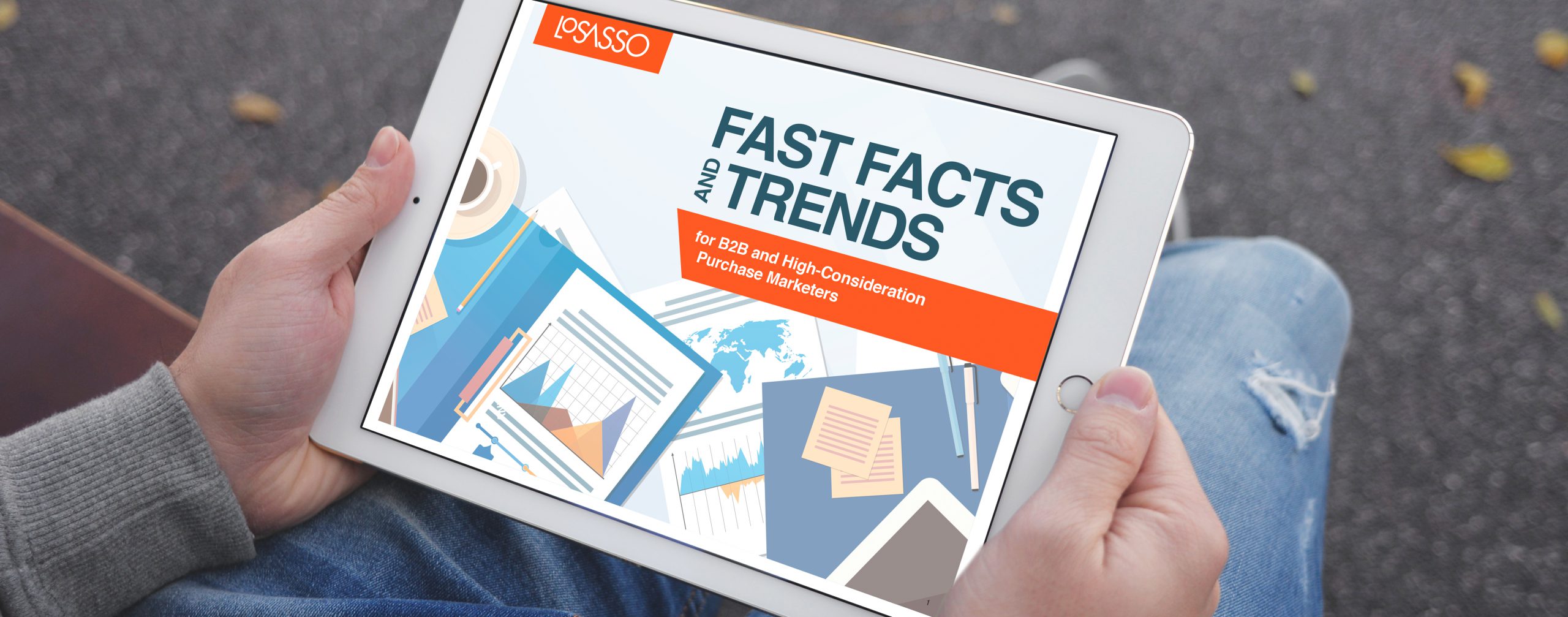Just give me the facts
You see it time and again in B2B marketing. Companies downplay the importance of brand and the power of emotion when marketing their products. They instead opt to focus on specs, pricing and other logical factors in their attempts to influence buyers—particularly, when selling complex products and services.
At first glance this seems logical. Complex products should require lots of hard facts to evaluate and compare in order to arrive at a decision, right? Unfortunately, it’s not that simple. Too much focus on data and logical inputs at the expense of branding and emotional drivers can actually undermine your sales success.
We all think of ourselves as highly rational creatures, but it turns out there are some very real limitations to how well we process information. Our conscious or “rational” minds can only absorb and evaluate a limited amount of information at one time. Even with ample time for things to sink in, giving buyers too much to think about can quickly leave them feeling overwhelmed and confused.
Combine your long list of product attributes with those of multiple sellers, and the result is often a bad case of analysis paralysis. This can lead to buyers deferring their decisions indefinitely or falling back on more obvious, easy-to-compare factors like price. This may be great if you are the low-cost provider, but it can quickly kill margins and leave companies with more sophisticated, high-end products out in the cold.
Make me feel it
The good news is that B2B marketers have a much more effective and powerful way to engage and persuade potential buyers—by tapping into the power of emotion through strong branding and storytelling.
People are actually quite intuitive. The human subconscious is an amazing information processor that can handle millions of bits of data without getting overwhelmed. We’ve all had experiences where we’ve surprised ourselves with a “gut” decision that turned out to be spot on. After the fact, it may have been hard to explain exactly why we made the decision or how we knew the answer. It just felt right.
Great branding taps into this, bypassing the rational, overwhelmed fact checker of the conscious mind and heading straight for the future raving fan of the subconscious by connecting on an emotional level.
Crossing that divide is about crafting the story and vision of who you are as a company and why you do what you do. It’s about connecting with your best prospects by showing you really understand who they are and what they’re up against. It’s about applauding what they do and showing that you’re there for them.
From the factory floor to the C-suite, everyone is influenced by the less rational side of the brain. People want to feel good about the companies they do business with—and that’s hard to deliver with facts and specs alone. If a brand can evoke a sense of excitement, a feeling of tribal connection, a perceived personal benefit or change in status by association, the connection can be extremely powerful.
OK, but I’m still in charge
In his book, “How Customers Think: Essential Insights into the Mind of the Market," Harvard Business School professor Gerald Zaltman studied consumers’ unconscious physical reactions and found that a full 95% of purchase decisions appear to take place unconsciously. It would seem then, that emotional and intuitive responses are far more influential than rational evaluation. Interestingly, his study also revealed that what buyers really think or feel often contradicts what they say. This is likely because they aren’t aware of the unconscious drivers behind their choices, and instead look to assign logical or tangible reasons for making their decisions.
The rational, conscious part of our brain isn’t very comfortable with gut reactions. It likes when things are explained with a little more detail. It wants to feel in control of decisions and able to point to something when asked about the choice and say, “that’s why I made my decision.” That’s where the facts, figures and customer satisfaction ratings you were trying to convince them with come back into play. As rational support points for an emotional decision, they provide a convenient hook to hang a decision on.
In the B2B world, buyers are often tasked with making large purchase decisions that can have a material impact on the companies they work for. Having a set of proof points ready can reduce their perception of risk and help ease the path to purchase, delivering the greatest success by leveraging the power of branding to tap in to emotional connections alongside rational arguments.
Similarly, Northwestern Kellogg School of Management argues there are three dimensions upon which B2B firms should build positioning platforms:
1. Functional – what the product does
2. Economic – what the brand means to the customer in time and money
3. Emotional – how the brand makes the customer feel
And they sum it up this way:
“Brands that are able to deliver emotional benefits alongside functional and economic attributes will command an incremental price premium and create a strong competitive advantage and customer brand loyalty.”
That sounds like a pretty rational argument for tapping into the power of emotional branding. How does that make you feel?


